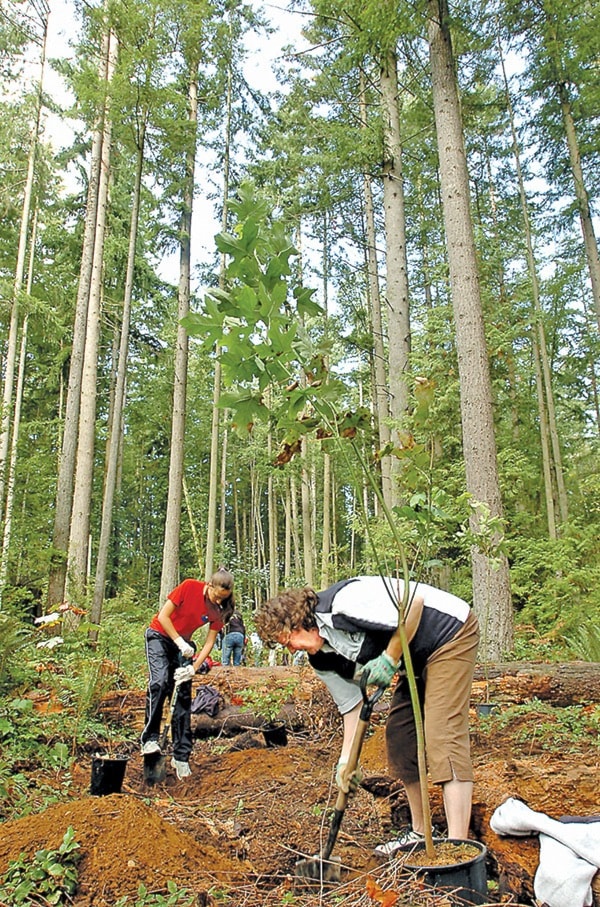As I sat down to write this column, I was distracted by a hummingbird dive-bombing a dragonfly in our garden.
Drawn outside to watch, I relaxed for a while in the shade of a tree, enjoying the dappled sunlight.
A robin sang melodically nearby and a red-breasted nuthatch gave its scratchy call as it inched up the bark of a cedar tree.
Distant traffic and airplane sounds were muted.
I am fortunate to live in a neighbourhood that still has many large conifers and landscaped yards, where birds sing and native bees and butterflies forage among the flowers.
Trees and natural landscapes have many benefits for humans far beyond resource values.
Had I undergone a medical procedure, my ability to sit in such a garden could have been critical to recovery. Studies show that hospital patients recover more quickly when looking at trees through a window compared with streetscapes or blank walls.
Children with hyperactivity and seniors experiencing dementia experience greater calm in natural surroundings.
Neighbourhoods with trees, parks and gardens encourage walking and other recreation which benefit overall fitness and health.
Trees are essential in making the earth inhabitable, absorbing carbon dioxide from the air and releasing oxygen for us to breathe. Their absorption of carbon dioxide is important in mitigating climate change.
Trees absorb air pollutants, dust and grime, and take up rainwater from the ground, preventing run-off and flooding, and stabilizing bluffs and slopes.
Biodiversity is greater where there are native trees which foster specific animal, plant and fungal associations.
Western red cedars have an iconic place in First Nations history and traditions, used for houses, boats, clothes and fishing nets. Massive Douglas fir could live for over 1,000 years and grow over 100m tall.
Dart’s Hill Park in South Surrey has many beautiful heritage trees, both ornamental and native. Nearby Sunnyside Acres is a beautiful woodland to wander in and enjoy the seasonal changes in nature.
We need more places like this set aside for our well-being and the health of the environment.
In the eagerness to maximize house sizes and profits, many new and infill developments occupy the whole extent of a lot, leaving no room for trees or landscaping.
This disregards the many studies which show suburbs with natural landscaping have higher property values.
Trees make a neighbourhood a more desirable place to live. Parks, boulevards and bluffs all benefit from the presence of shade trees.
Many municipalities, such as Surrey and Delta, have recently revised their tree-protection bylaws to encourage owners to retain trees on their properties and prevent cutting without the proper permits.
Removing trees can detrimentally affect neighbours by increasing the risk of blowdown of surrounding trees, with consequent property damage, power outages, etc.
It can increase the risk of flooding, since large trees absorb so much water from both the ground and rainfall, and it can affect people’s enjoyment of their own property, as foliage frames and enhances views, and removing it changes the ambience of a neighbourhood.
Enjoyment of trees can be culturally variable – the wet B.C. coast with its giant trees is very different from the open landscape of the Canadian prairies and takes some adjustment from those who move location (as our family did), but hopefully as the benefits of trees become better-known and understood, land owners will consider keeping mature trees, not cutting them.
Anne Murray, the author of two nature books available in local book stores, writes monthly in the Peace Arch News – www.natureguidesbc.com
